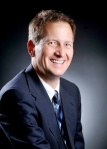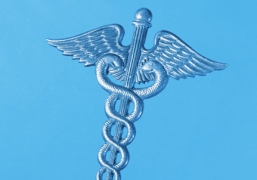Issues You May Not Have Considered
By David K. Luke MIM, Certified Medical Planner™
www.CertifiedMedicalPlanner.org
 The entire nation continues to experience a medical malpractice liability crisis.
The entire nation continues to experience a medical malpractice liability crisis.
Facing physicians is the concern of frequency and severity of claims that either continues to rise or remains steady. And, much has been written about the impact of the liability crisis on physicians, the medical community, patients and access to care.
But, with health 2.0 connectivity, there are even more risks for doctors, and most all medical professionals, to consider.
So, here are a few fresh liability risks to your medical practice, to you, and to your patients courtesy of the health information age:
- Data breech risk. While not a new risk, the higher prevalence is new. The risks of a being fined by OCR due to the privacy rules of HIPAA because a practice had a data-breech with their EHR is becoming more common and very expensive
- Risks of telemedicine. As physicians become more technologically enabled in their practice of medicine, some are turning to real-time videoconferencing and other technologies. Some specialties such as psychiatry have been early adopters, but have to make sure they are still employing the same standards of care required by an in office visit (Cash 26). Also, the telephone can facilitate medical care but also result in adverse outcomes leading to telephone-related malpractice suits (Mondor, et al 517).
- Risks of new age medicine practices and their regulation. Case in point: Dry needling, which is like acupuncture, is a growing practice in places like Australia but is unregulated. Physicians should understand all regulatory and other risks when implementing new unregulated practices pushed by our new age society (Janz). Home births are on the rise in North America (even in Canada with government provided hospital delivery) but physicians end up dealing with the disasters and associated risks when they occur (Bochove 68).
- Reputation Risk. Reputation is a doctor’s most valuable asset. With the new age of internet and instant information, physicians must take great care in managing their reputation on such media sources as they are under increasing public and press scrutiny (Boyd 221).
- Communication risks to immigrants with limited non-native language proficiency. With today’s higher immigrant population in the United States, more medical practices are treating patients with limited English language proficiency. Clinicians now run the risk of not properly communicating medical risk information to these populations. A recent study shows that materials that include visual aids are being used by medical practices to effectively communicate with the patient (Garcia-Retamero, Rocio, and Mandeep, K. Dhami 47).
- The rise of the informed distrusting patient and related risks. With the ubiquity of medical information on the internet, the risks incurred by a medical practice in properly dealing with the newly informed patients with medical degrees from the University of Google Medical School are on the rise. Physicians must refine their “bed side manner” and improve their communication skills in order to deal with a more questioning patient population. Clinicians should actively discuss what patients have read on the internet when patients refer to their internet diagnoses (Lam-Po-Tang, John, and Diana McKay 130).
Works Cited
- Bochove, Danielle. “Don’t Try This At Home.” Maclean’s 124.33/34 (2011): 68. MasterFILE Premier. Web. 27 Apr. 2012.
- Boyd, M. “Managing Risk To Reputation.” Clinical Risk 15.6 (2009): 221-223. CINAHL Plus with Full Text. Web. 27 Apr. 2012.
- Cash, Charles, D. “Telepsychiatry And Risk Management.” Innovations In Clinical Neuroscience 8.9 (2011): 26-30. CINAHL Plus with Full Text. Web. 27 Apr. 2012.
- Garcia-Retamero, Rocio, and Mandeep, K. Dhami. “Pictures Speak Louder Than Numbers: On Communicating Medical Risks To Immigrants With Limited Non-Native Language Proficiency.” Health Expectations 14.(2011): 46-57. CINAHL Plus with Full Text. Web. 27 Apr. 2012.
- Janz, StephenAdams “Acupuncture by Another Name: Dry Needling in Australia.” Australian Journal Of Acupuncture & Chinese Medicine 6, no. 2: 3-11. Alt HealthWatch, EBSCOhost. Web. 27 Apr. 2012
- Lam-Po-Tang, John, and Diana McKay. “Dr Google, MD: A Survey Of Mental Health-Related Internet Use In A Private Practice Sample.” Australasian Psychiatry 18.2 (2010): 130-133. Academic Search Complete. Web. 27 Apr. 2012.
- Maureen Mondor, et al. “Patient Safety And Telephone Medicine.” JGIM: Journal Of General Internal Medicine 23.5 (2008): 517-522. Academic Search Complete. Web. 27 Apr. 2012
Conclusion
Your thoughts and comments on this ME-P are appreciated. Feel free to review our top-left column, and top-right sidebar materials, links, URLs and related websites, too. Then, subscribe to the ME-P. It is fast, free and secure.
Speaker: If you need a moderator or speaker for an upcoming event, Dr. David E. Marcinko; MBA – Publisher-in-Chief of the Medical Executive-Post – is available for seminar or speaking engagements. Contact: MarcinkoAdvisors@msn.com
OUR OTHER PRINT BOOKS AND RELATED INFORMATION SOURCES:
- DICTIONARIES: http://www.springerpub.com/Search/marcinko
- PHYSICIANS: www.MedicalBusinessAdvisors.com
- PRACTICES: www.BusinessofMedicalPractice.com
- HOSPITALS: http://www.crcpress.com/product/isbn/9781466558731
- CLINICS: http://www.crcpress.com/product/isbn/9781439879900
- ADVISORS: www.CertifiedMedicalPlanner.org
- BLOG: www.MedicalExecutivePost.com
- FINANCE:Financial Planning for Physicians and Advisors
- INSURANCE:Risk Management and Insurance Strategies for Physicians and Advisors
Filed under: CMP Program, Information Technology, Risk Management | Tagged: CMP Program, david k. luke, EHRs, health data breaches, New-Age Physician Risks Courtesy of HIT, OCR, Risks of telemedicine, www.certifedmedicalplanner.org, www.NetWorthAdvice.com | 9 Comments »



















